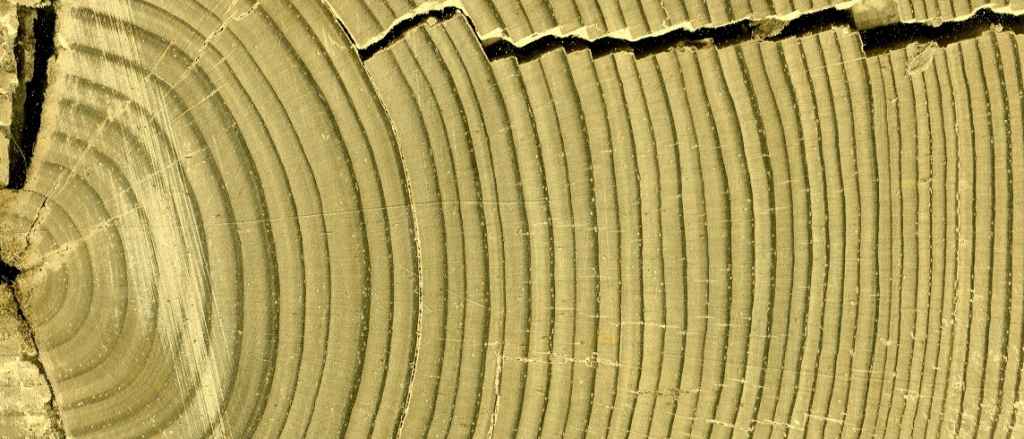Fiercest solar storm in history dated through trees growing in Lapland

Should a storm of similar magnitude occur now, it would have dramatic consequences, including damage to modern navigation and communication satellites and fatalities among the astronauts in space. A study carried out by the University of Helsinki, the Natural Resources Institute Finland and the University of Oulu pinpointed the solar storm to the spring of 774.
The Earth’s magnetic field guides the particles from solar storms into the atmosphere primarily through the Arctic regions. The most visible resultant phenomenon is the aurora borealis. Particles with sufficiently high energy can also produce, through nuclear reactions, the radioactive isotope of carbon, or radiocarbon (14C), in the atmosphere. This radiocarbon merges with atmospheric carbon dioxide and ends up in the annual growth rings of trees through photosynthesis.
According to a recent finding made in Japan, a remarkable rise in radiocarbon concentration occurred in 775. Researchers at the University of Helsinki and the Natural Resources Institute Finland (LUKE) took up the chance to measure this phenomenon closer to the North Magnetic Pole.
Growth rings form a calendar
The study was made possible by an annual chronology of tree growth variation compiled by LUKE, also known as a growth ring calendar. The series of annual growth rings from subfossil – or only partially fossilised – tree deposits covers the past 7,600 years. The trees were collectedfrom northern lakes, from which LUKE has been collecting and recording samples from the 1990s onwards.
“Trees are a memory stock of the past,” quips Markku Oinonen, director of the Laboratory of Chronology at the Finnish Museum of Natural History, University of Helsinki.
Projects managed by Oinonen have in recent years produced innumerable isotope analyses of tree rings, enabling the multidisciplinary investigation of past phenomena.
Radiocarbon data is collected from trees by carving wood grown in each relevant year into individual samples, turning them into cellulose and then burning and chemically reducing the material into pure carbon, from which the concentration of radiocarbon can be determined. The recent study was completed in collaboration with the LUKE Rovaniemi laboratory, the Laboratory of Chronology and the Accelerator Laboratory of the University of Helsinki.
Strongest signal found in the Arctic region
“Around the year 775, we found the strongest radiocarbon signal specifically in the growth rings of trees that grew in Lapland, while the weakest signal was found in trees from lower latitudes,” says Joonas Uusitalo, the project’s doctoral student.
The latitude-dependent variation of the radiocarbon signal and its brief nature identified in the study are strong indications of the Sun being the event’s origin – a supernova, a gamma-ray burst or a comet would not cause anything similar.
The radiocarbon concentrations were determined for several years and, for the first time, from both early- and latewood grown in each individual year. A theoretical model on the production of radiocarbon developed by researchers of the University of Oulu was utilised in interpreting the results. The findings indicate that the solar flare occurred during the spring of 774.
“This is the strongest known solar storm. Should a storm of similar magnitude occur now, it would have dramatic consequences, including damage to modern navigation and communication satellites and fatalities among the astronauts in space,” says Professor Ilya Usoskin from the University of Oulu.
Such dire consequences make it necessary to evaluate the intensity of solar storms and their potential incidence. According to Usoskin, solar storms of such intensity are fortunately very rare, with a frequency of one in several millennia. Something similar, however, may take place at any time.
“Trees in Lapland provide us with a very accurate ‘tool’ for studying past solar storms,” Usoskin confirms. The intense signal found in the Arctic region highlights the significance of the annual growth ring calendar compiled for Arctic trees in studies focused on past solar behaviour.
Precise dating of past events
“Our goal is to further expand growth ring studies towards elemental analysis and density measurements. This will enable us to produce uniquely accurate dating of phenomena visible in tree rings, such as volcano eruptions, forest fires and pollution,” explains Oinonen of his vision.
The newly published study was carried out as a consortium project between the Laboratory of Chronology at the University of Helsinki and the Natural Resources Institute Finland, with researchers from the University of Oulu, the Sodankylä Geophysical Observatory and the Ioffe Institute in St Petersburg participating. The project was funded by the Academy of Finland.
The study has been published in the Nature Communications journal: https://www.nature.com/articles/s41467-018-05883-1
Further information:
Joonas Uusitalo, MSc
doctoral student
University of Helsinki
Laboratory of Chronology, Finnish Museum of Natural History LUOMUS
joonas.uusitalo@helsinki.fi
+358 318 7296
Samuli Helama, DPhil
researcher
Natural Resources Institute Finland
samuli.helama@luke.fi
+358 29 532 5047
Ilya Usoskin, DPhil
professor
University of Oulu
ilya.usoskin@oulu.fi
+358 50 344 1247